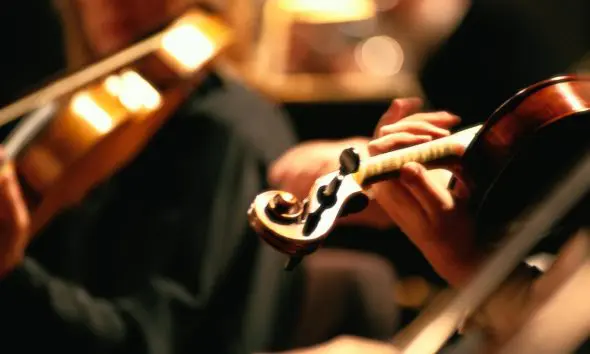Best Mahler Works: 10 Essential Pieces By The Great Composer
Discover our selection of the best Mahler works including Symphony No. 2 (‘Resurrection’) and Symphony No. 8 (‘Symphony Of A Thousand’).

Gustav Mahler (7 July 1860 – 18 May 1911) is undoubtedly one of the most elusive, controversial phenomenons of the early twentieth century. There’s no tiptoeing around Mahler: his music is a psychologically demanding, mind-blowing, post-Romantic whirlwind of an experience. His brilliant, fastidious musical mind, coupled with a disdain for orthodoxy and unbounded Romantic spirit, has solidified his name in the history books as a dissident, uninhibited composer of the highest quality. He strived for his music to be all-encompassing, somehow marrying wide-ranging cosmic concepts, the meaning of life, the inevitability of death, with lyricism, folksong, tonal exploration, the macabre, chorales, and vast performing forces. Discover our selection of the best Mahler works featuring 10 essential masterpieces.
Listen to the best of Mahler on Apple Music and Spotify.
Symphony No.2, ‘Resurrection’
Diving straight in with one of the most powerful and evocative symphonies in the repertoire: Mahler’s famous Second Symphony. In its day (1895), this was a work of unprecedented scale, with a full chorus, enormous string section, organ, doubled wind and brass, a whole host of percussion (including church bells and seven timpani), and soprano and alto soloists alongside the orchestra. This symphony, one of Mahler’s best works, is arguably unrivaled in its immense power and poignancy – its nickname ‘Resurrection’ is derived from the distinctive program, written by Mahler himself, with the final concluding line: “Die shall I in order to live/Rise again, yes, rise again.”
Symphony No. 8, ‘Symphony Of A Thousand’
Mahler’s approach to symphonies was simple: the bigger the better. This could not be truer for his Eighth Symphony, aptly called the ‘Symphony Of A Thousand’ because the 1910 premiere required just that: 858 singers, including eight soloists, two mixed choruses and a children’s choir, and 171 instrumentalists. Also quintessentially Mahler is the dense subject material focussing on death and creation, taking inspiration from a medieval Latin hymn “veni creator spiritus” as well as Goethe’s Faust. The often-dark, unrelenting score for this monumental symphony is sheer genius – there’s really nothing else in the classical canon quite like it.
Symphony No.5
The Fifth Symphony (1902), one of Mahler’s best works, leans slightly more towards conventionality than Mahler’s other symphonies. For this piece, he eschews the use of a narrative program as well as the enormous vocal textures of his previous symphonies and instead takes an almost-autobiographical approach. After a serious illness in 1901, Mahler married Alma Schindler in 1902; both life-changing events are musically manifested in the Fifth. It begins in a typical Mahler fashion, with a pyrotechnical ‘Trauermarsch’ (funeral march), but soon unfurls into lighter moments. Nestled at its heart is the fourth movement, the ‘Adagietto’ – a love letter to Alma. With reduced numbers of performers, gossamer strings, and soaring romantic harmonies, this beautiful movement is driven by raw, authentic emotion.
Das Lied Von Der Erde (Song Of The Earth)
Based on six poems that were originally translated from Chinese under the name The Chinese Flute, Song Of The Earth tackles the existential issues of life, nature, beauty and death. The entrancing score travels through a myriad of emotions, with careful optimism contrasted with bitterness, struggle, and resigned acceptance. The rich, transportive tones of the tenor and contralto solos linger on the poignant phrase, “dark is life, dark is death”, firmly grounded by a brooding orchestral accompaniment with pentatonic colorings.
Symphony No. 9
Mahler completed the last of his colossal symphonies in 1909. By this time, he had been diagnosed with a heart condition and knew that his own death was potentially imminent. Faced again with his own mortality, the Ninth is often seen as Mahler’s farewell. Direct quotations from Beethoven’s ‘Farewell’ Sonata and irregular rhythms in the first movement, which Bernstein once suggested represented the irregular, failing rhythms of Mahler’s heart, contribute to the poignancy of this incredibly moving piece. A slow, drawn-out finale gradually falters, with the final bar is marked ‘ersterbend’, meaning ‘dying’.
Kindertotenlieder (Songs On The Death Of Children)
Perhaps best understood as a homage to the eight siblings Mahler lost in his childhood, Kindertotenlieder is a set of five profoundly emotive songs. Mahler takes his text from poems by Rückert, who, after the death of two of his children, channeled his grief into 428 poems. Although the anguish and misery are tangible, there’s almost a clarity to these pieces: sparse, stripped-back textures wrenched into dissonant harmonies before finding an unsatisfactory resolution. Tragically this became a grim, self-fulling prophecy, as Mahler lost his own four-year-old daughter Maria to scarlet fever, four years after he completed Kindertotenlieder. Uncomfortable and emotional, but perhaps necessary listening in order to understand Mahler the man as well as Mahler the composer.
Symphony No. 1, ‘Titan’
Mahler poured everything but the kitchen sink into his symphonic debut, which covers a myriad of ideas from life, to death, nature, personal trauma, and philosophical thought. He later rejected the title he had given it, not wanting to limit the universality of its meaning. There are several remarkable things about this groundbreaking symphony. The first movement begins with a single note played in seven octaves across the orchestra, before opening to a light, folkish tune. In a particularly bleak moment, the five minutes break between the first and second movements, Mahler instructs us to “stare into the face of emptiness”. You may recognize his material for the third movement – only Mahler could take the innocent tune of Frère Jacques and pervert it into a solemn, macabre march. And then the orchestra is let loose in a truly tumultuous finale.
Piano Quartet In A Minor
His sole surviving piece of chamber instrumental music, Mahler’s Piano Quartet, offers insight into his early compositional development – it was written during his first year at the Vienna Conservatory when he was aged around 15. Often overshadowed by the mighty symphonies, this piece is something of a hidden gem. It is easy to hear the beginnings of Mahler’s dramatic intensity here, with sad, sweeping lyricism, complex dissonances, and virtuosic, competing instrumental lines. The Piano Quartet also features in the soundtrack for the 2010 film Shutter Island, directed by Martin Scorsese.
Symphony No.6, ‘Tragic’
Buckle up, because this one is subtitled the ‘Tragic Symphony’. Unlike its predecessors, which wrestle with tragedy and often triumph, the conclusion of the Sixth is so expressively desperate it feels almost dangerous. The finale famously features three hammer strikes, three ‘blows of fate’, as the chilling metal blows reverberate around the orchestra. Perhaps the most emotionally disturbing yet wonderfully Mahlerian of all the symphonies.
Symphony No. 3
By his third symphony, Mahler had honed his detail-orientated, vastly complex compositional style. This symphony was an epic ode to nature, in the composer’s own words: “all stages of evolution in a step-wise ascent. It begins with inanimate nature and ascends to the love of God.” Again Mahler uses vocal colors and textures in the unconventionally slow finale of this symphony. But with six glorious movements, demanding intricate, virtuosic playing, lasting for just over a ninety-minutes (the first movement alone accounts for half of the length), you’ll need some serious stamina to make it through. But hang in there – the view from the top is sublime.
Recommended Recording
Gustavo Dudamel and the Los Angeles Philharmonic Orchestra won Best Choral Performance for their revelatory recording of Gustav Mahler’s Symphony No. 8, the ‘Symphony of a Thousand’, at the 2022 Grammy Awards. Mahler’s extraordinary Symphony No. 8 spans a universe of emotions, channeled through everything from passages of intimate reflection to overwhelming outbursts of choral and orchestral sound. Mahler said the finished score was, “something in comparison with which all the rest of my works are no more than introductions”. Although known since the time of its first performance in 1910 as the ‘Symphony of a Thousand’, because of the great number of performers required, Gustavo Dudamel’s vision of the work was realized by a total of 346 performers. The Los Angeles Philharmonic was joined by the Los Angeles Master Chorale, Pacific Chorale, Los Angeles Children’s Chorus, National Children’s Chorus, and soloists Tamara Wilson, Leah Crocetto, Erin Morley, Mihoko Fujimura, Tamara Mumford, Simon O’Neill, Ryan McKinny and Morris Robinson.





Steven
October 30, 2021 at 9:18 pm
Listening to the 8th now, love it.